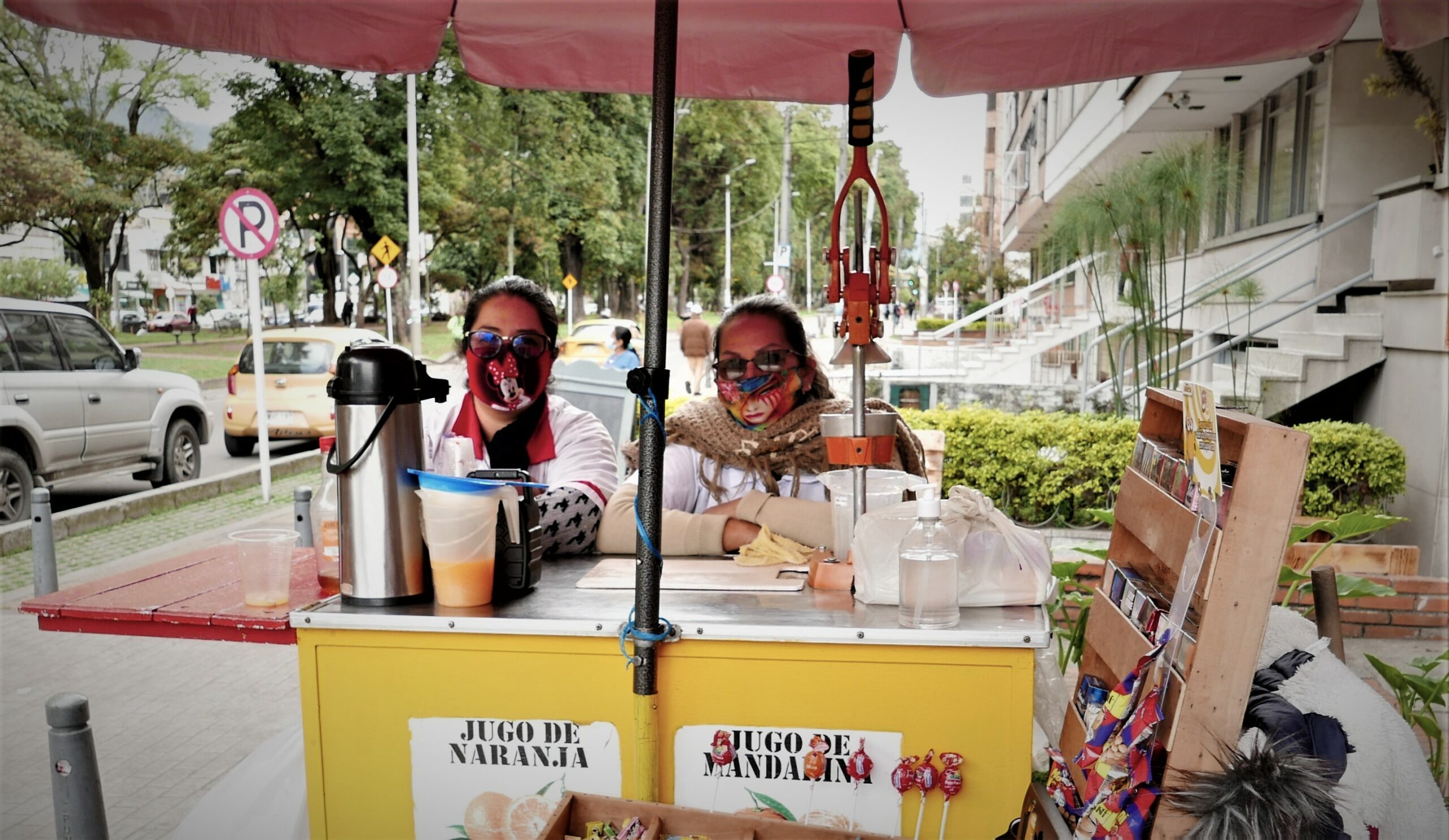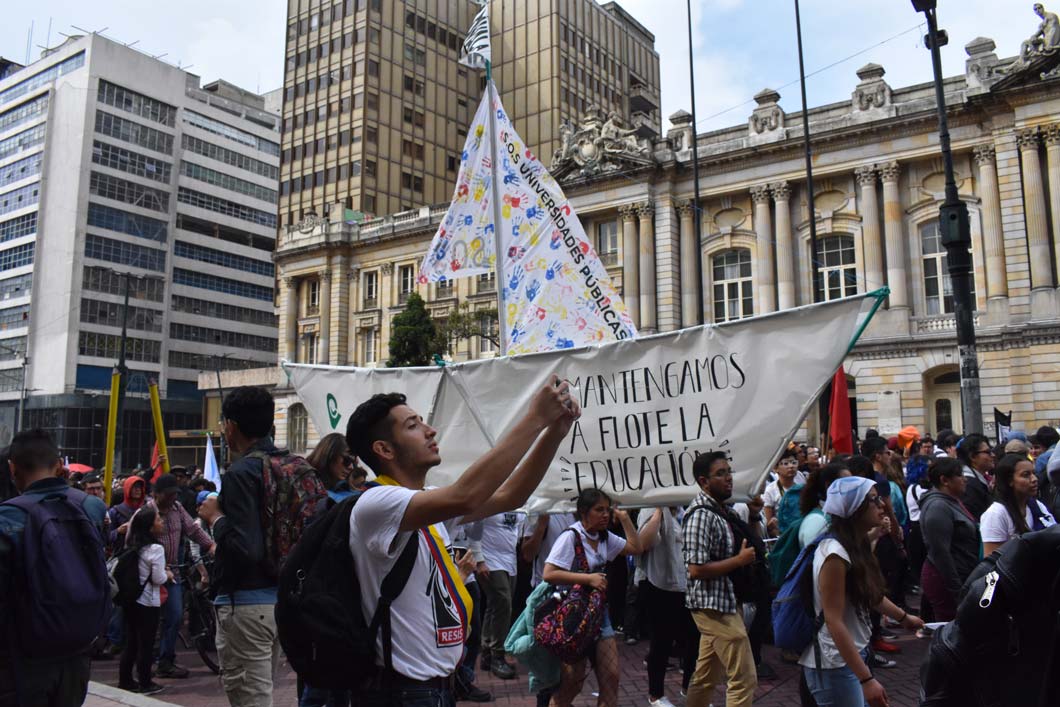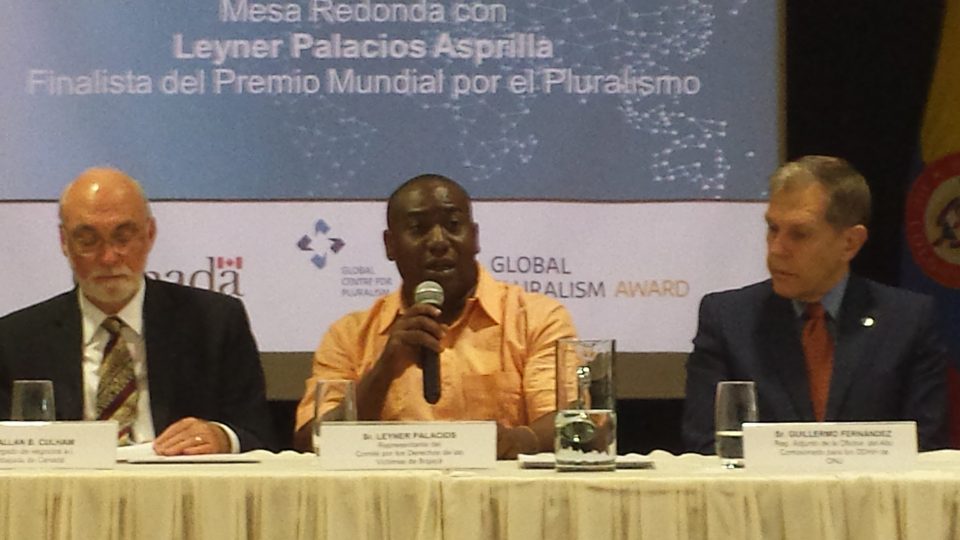As we move towards Halloween, there’s nothing scarier than the prospect of politicians on the campaign trail. That’s because, like ghouls, they wake up every four years to feast on the hopes of the living. On the 29th of October, we will find out which nightmare(s) we have to look forward to.
The race is on for who will take over from Claudia López as Bogotá mayor. There are also elections for the Bogotá Council and the localidades of Bogotá elections. Foreigners can vote if they have residency in Colombia and are registered to vote (details in final section).
The mayor of Bogotá is often considered the second most powerful politician in the country, so turnouts are usually good, with 55% hitting the booths last time out. Because the last election was close, there will be a run-off in the Bogotá elections this year with the top two candidates facing off again three weeks later. Claudia López won that race with 35.21% compared to Carlos F Galán’s 32.48%.
The outgoing mayor
López has had an odd term as mayor. The COVID pandemic made for a serious departure from the normal run of things. She bungled the first half of the pandemic, earning the name Fraudia for her constant flip-flopping. That said, she did then manage to claw back some credibility, even if Pico y Género was an especially baffling measure.
One potential positive legacy from her mayorship is the corredor verde project. It’s an ambitious attempt to get cars off the Séptima and improve mobility drastically, but opposed by NIMBY locals since before Claudia was in office. The controversial plan is far from certain to be completed, though. Particularly as it may well be cancelled by whoever wins the Bogotá elections.
Another positive? She may be remembered as the Metro mother, given that she saw it break ground. But that may be forgotten all too quickly – the Metro won’t even open during this mayor’s spell. Even so, she’s done good work there, and deserves credit. She also opened the Tembici bikeshare system, which has surpassed expectations with over a million uses already.
Her Jóvenes a la U project to get disadvantaged kids into uni has been a success. She’s opened five new casas LGBTI to support people in the rainbow community and she’s proposed an actual local police force, though that’s not been approved yet. However, most of her successes have been in the effective but unspectacular folder.
On many metrics, the court of public opinion is heavily against her. Rubbish is piled in the streets, most crime is up and a sense of disorder hangs in the air. Most citizens and residents have the feeling that everything is getting worse, although figures largely don’t bear that out.
Since the election of Gustavo Petro as president last year, relations have been increasingly frosty between the Casas Liévano and Nariño. Claudia recently asked via a tweet what Bogotá had done to be treated like this, accusing the premier of sabotaging the city.
Oddities
Colombian politics is often quirky and these Bogotá elections are no exception. Claudia is from the Alianza Verde, which isn’t a green party in the sense that they want to protect the environment but simply use green as their colour.
They’re also the biggest party on the Council, but are running no candidate for mayor this time around. Neither are the Liberals or Conservatives, two of the other dominant parties. In fact, most of the mayoral candidates in the Bogotá elections are essentially independents.
The vote takes place on the day of rest, Sunday, and ley seca – no drinking rules – will be in force. Yes, that’s right, the city doesn’t want drunk voters for the Bogotá elections. In fact, no hungover ones either, so that restriction will kick in sometime on Saturday. The usual result of this is a massive Friday night and house parties on the Sat.
Voters also receive a little card to say they voted in the Bogotá elections, which is a nice touch. You may well find that coffee shops and the like offer discounts to people who have voted on the day, which again, is pretty nice. File under things the capital does very well.
If you’ve ever thought you’d like to bin all the candidates in an election, Colombia has an answer for you: voto en blanco. This option means that the Bogotá elections will be rerun, with none of the candidates allowed to stand again. It never gets that far, which is a surprise seeing that many rolos regularly say all politicians are crooks and there’s no point voting.
Bogotá elections: The mayoral candidates
Most votes will be cast in the Bogotá elections on the 29th for mayor. There are seven men running in the race, and no women, which has raised a few hackles. Only four are regularly polling well, though: Gustavo Bolívar (Pacto Histórico), Carlos F Galán (Nuevo Liberalismo), Rodrigo Lara (independent), and Juan Daniel Oviedo (Con toda por Bogotá), all of whom we will profile next week.
Bolívar is by far the most leftwing of that group, balanced out by Lara at the other side of the scale. Oviedo and Galán sit somewhere in the middle politically. Bogotá elections are often very left-leaning, which puts Bolívar in a relatively strong position. The few rightist voters are also being split three ways, which doesn’t help Lara at all.
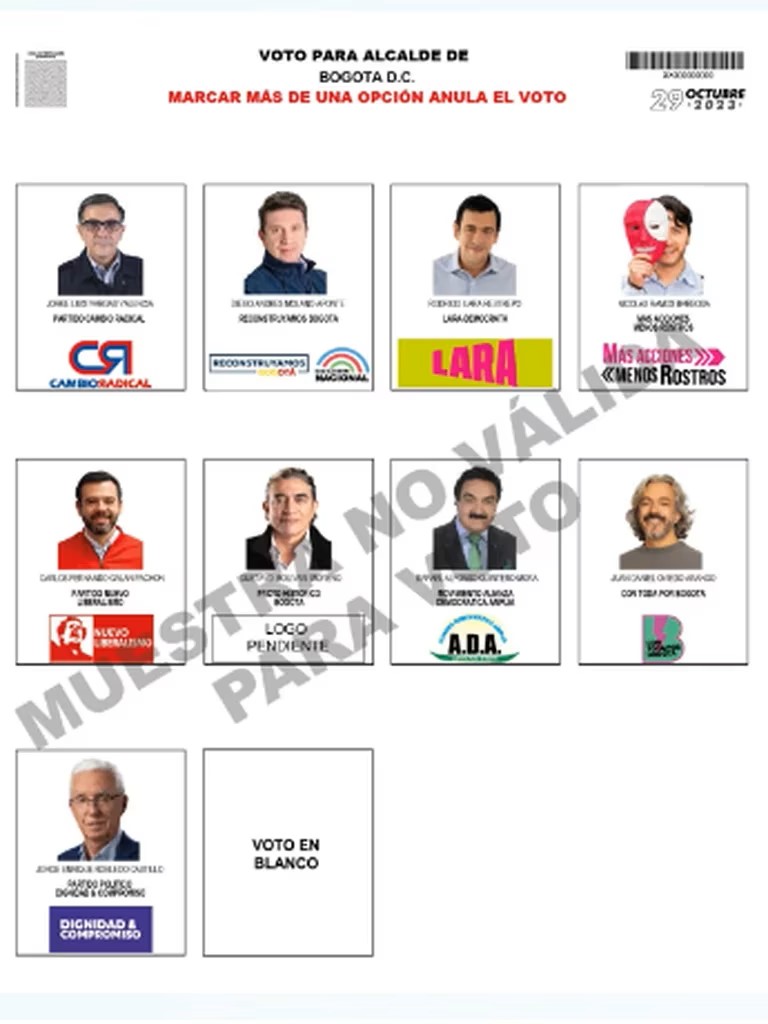
The other three candidates are not polling well at all in the Bogotá elections and need some sort of miracle to get anywhere. However, they are not irrelevant. Former Defence Minister Diego Molano (Reconstruyamos Bogotá) in particular has got under the skin of Bolívar with his attacks on the primera línea protestors. Former General Jorge Luis Vargas (Cambio Radical) is the other rightist candidate but has had little impact.
Jorge Robledo (Dignidad y Compromiso) is probably the most competent of the candidates, but is languishing in the polls, rarely getting to 5%. These Bogotá elections are reminiscent of the 2018 national election, where Humberto de la Calle got all the neutral praise but none of the popular vote. Democracy doesn’t work, kids!
The other two in the Bogotá elections are more or less in the ‘who that’ category. Nicolás Ramos Barbosa (independent) wears a mask, saying there should be menos rostros, más acciones, but has made no headway. Rafael Alfonso Quintero (Alianza Democrática Amplia) has talked about a free TransMi.
Crime is perhaps the biggest issue for most people in the Bogotá elections, and so Lara, Molano and Vargas are all giving it the mano dura. Bolívar is having to walk a tightrope here. He has to support the young protestors, yet much of the city sees them as vandals. He is clear though about promising more CAI and a 50% increase in coppers. The others are more vague.
Transport is high on the list for many, too, and that’s harder to call. It seems that the Metro will be continued by all, but there may be changes. This is not a small thing. Whoever wins will have years of chaos and still no metro until 2029. Bolívar especially is likely to accede to central government demands to go underground. Lara is firmly on the side of the motorist, while no one seems to want to anger the rich voters of Rosales regarding the corredor verde.
Talking of the central government, it’s hard to see anyone except Bolívar being on friendly terms with the Casa de Nariño. Galán and Oviedo are likely to have similarly tetchy relations as Claudia. If any of the rightwingers pull off a miracle, they will be in open opposition to Petro, who will likely reply in kind.
Bogotá elections: The council
While the mayoral race is the BIG NEWS and will draw most of the attention, the Council of Bogotá is a surprisingly powerful body. It can block the mayor to a large degree. It also decides on many budgetary measures. The current 45-member council is dominated by the Green party (11 seats), with the Liberals second (7) with Cambio Radical (5) and Centro Democrático (5) providing opposition. Another 8 (eight) parties are represented on the Council.
The council race in the Bogotá elections is governed by an incredibly complex method that makes the cricketing Duckworth-Lewis method look simple. It essentially means that the party with the most votes gets the most seats and it is roughly proportional.
Some parties run open lists, so you can choose a candidate, while others don’t and they decide who takes their seats. Those that use open lists usually fill their seats directly depending on received the most votes, so it’s pretty straightforward apart from the maths.
But there’s nothing Colombians love more than layer upon layer of bureaucracy to fatten the pig of state. That means another layer to the elections – the localidad level. Here, a whopping 184 ediles will be chosen to represent their localidades. These function on a hyperlocal level, although it’s worth remembering that the bigger localidades like Suba will have over a million residents, placing them easily in the Colombia top ten if they were an independent city.
Because seats are allocated by percentage of vote, even very small parties can get into the Council, which is both a strength and a weakness. It makes it very hard for a dominant party to emerge, as in first-past-the-post systems, but also means there can be trouble getting decisions made.
Negotiation is good in general, but it does open the door to pork-barrel politics. However, even parties that are less popular in Bogotá such as the Cambio Radical will have at least some representation whatever happens in the Bogotá elections and that’s good for democracy.
Bogotá elections: How it all works
As noted earlier, residents of 18 and above can vote in Bogotá elections, although you will have to have registered yourself to vote, and the deadline has passed for this year. The runoff will follow the same procedure, minus the council elections.
Still, if you have registered, go to your polling station (this will likely be where you registered yourself) on the 29th. From there, it’s an easy process. Show your cédula and you’ll be given a bunch of cards and you go to a booth, mark your paper and drop it in a box. If you’re not registered with a polling station, you can go to Corferías and vote there. There will be queues, but they’ll also move quickly. The government has a nice guide (.pdf) for you.
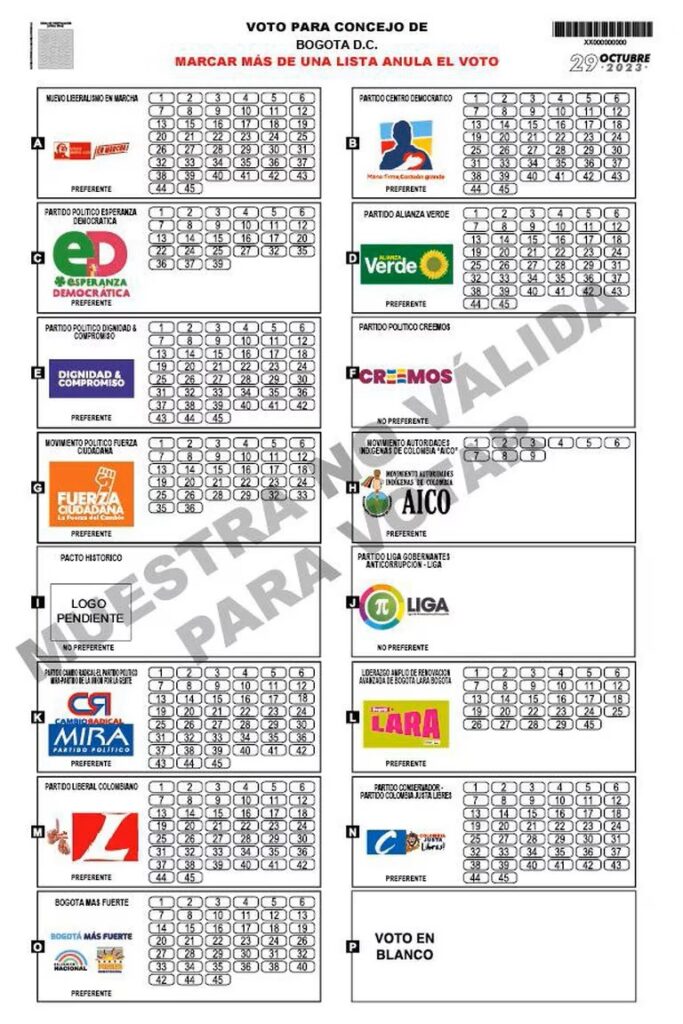
You will have a vote for your choice of mayor, plus a vote for councillors, plus votes for ediles at the localidad level. One of each, and in the case of the latter two you get to choose one party and possibly an individual if they have a preference option (most do). If the list is non-preferential, the party will decide who gets in.
When you mark the card, you draw a big X on the face of the person you want, which feels counterintuitive. The voting form for the mayoral race is pretty clear, the council and localidad votes are simply numbers, so make sure you know which one you want before going in. Note that voto en blanco means marking that box and not spoiling your vote.
The process is overseen by the CNE and citizens are called up as jurados de votación, so don’t be surprised if friends or family are grumbling about having to waste a day. It’s a pretty good system of citizen engagement, though, and hard to manipulate. Of course, there are other ways of committing fraud, but that’s a relatively small affair in Bogotá elections, despite what people may tell you.


